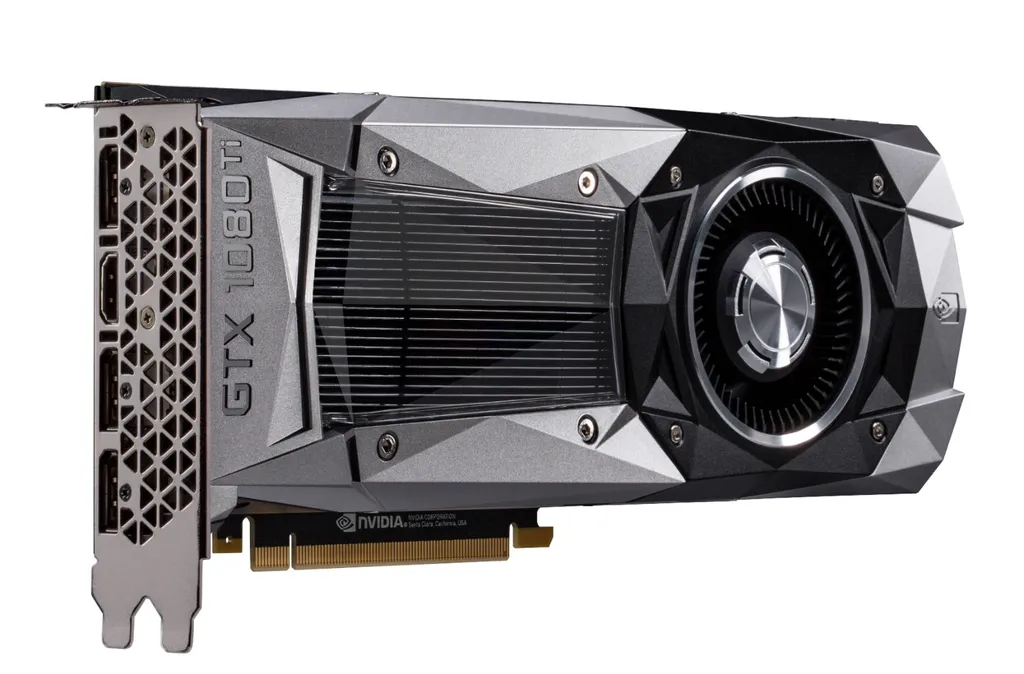As many of you already know, NVIDIA is one of the leading purveyors of graphics cards which are heavily used for VR. In fact, NVIDIA is the go-to solution for the majority of users, so it is always a good day when the company launches a new graphics card. This is especially true when they launch a brand new high-end graphics card. The new GeForce GTX 1080 Ti is the new top dog within NVIDIA’s lineup of graphics cards and is designed to be the fastest card that the company has offered to date. Yes, that includes the GeForce GTX Titan X Pascal, the fastest and most sought after graphics card.
The specs for the GPU itself are:
- 12 Billion transistors
- 1.6 GHz Boost clockpeed, 2 GHz Overclock
- 3584 CUDA Cores (same as Titan X Pascal)
- 352-bit memory bus (384-bit on Titan X Pascal)
- 11 Gbps memory speed (10 Gbps on Titan X Pascal)
- 11 GB of RAM (12 GB on Titan X Pascal)
- 250 Watt TDP (Same as GTX Titan X Pascal)
The expectation is that the GTX 1080 Ti will be 35 percent faster on average than a GTX 1080, according to NVIDIA, which should mean that it will outperform the GTX Titan X Pascal in gaming and VR. The GTX 1080 Ti will ship in March and be available for $699. NVIDIA also killed the DVI port on the new GTX 1080 Ti, which won’t really be missed. It has three DisplayPort connectors and one HDMI connector, allowing for three monitor display configurations with an HDMI, which is what I’m running at home right now.
In addition to the new GPU, NVIDIA is also announcing support for VR Works inside of Unity including support for VR SLI, Multi-Res Shading, Lens Match Shading and SPS. Thanks to the VRWorks features on NVIDIA’s GPUs, benchmarks like Basemark’s VR Score saw as much as a 40% performance uplift. Also, in addition to announcing support for Unity and VR benchmarks, NVIDIA is introducing their own tool to measure VR quality called FCAT VR. This tool is built on their frame capturing technology which seeks to discover real world performance and actual frames displayed to the headset. They’ve also introduced an advanced data analysis tool with FCAT data analyzer to allow anyone to analyze a game or application’s behavior.
While we don’t exactly know how much faster it will be than the Titan X Pascal, the expectation is that it will be faster and significantly faster than the GTX 1080. This is a good thing because it means that VR developers can really start to look at enabling eye candy features in their applications and that we can start to think about possibly increasing the resolution of VR HMDs down the road as well. There are already higher resolution displays out there and graphics cards like the GTX 1080 Ti are going to be critical to enabling those high resolutions at acceptable frame rates.
Disclosure: My firm, Moor Insights & Strategy, like all research and analyst firms, provides or had provided research, analysis, advising, and/or consulting to many high-tech companies in the industry, including NVIDIA and others. I do not hold any equity positions with any companies cited.




























